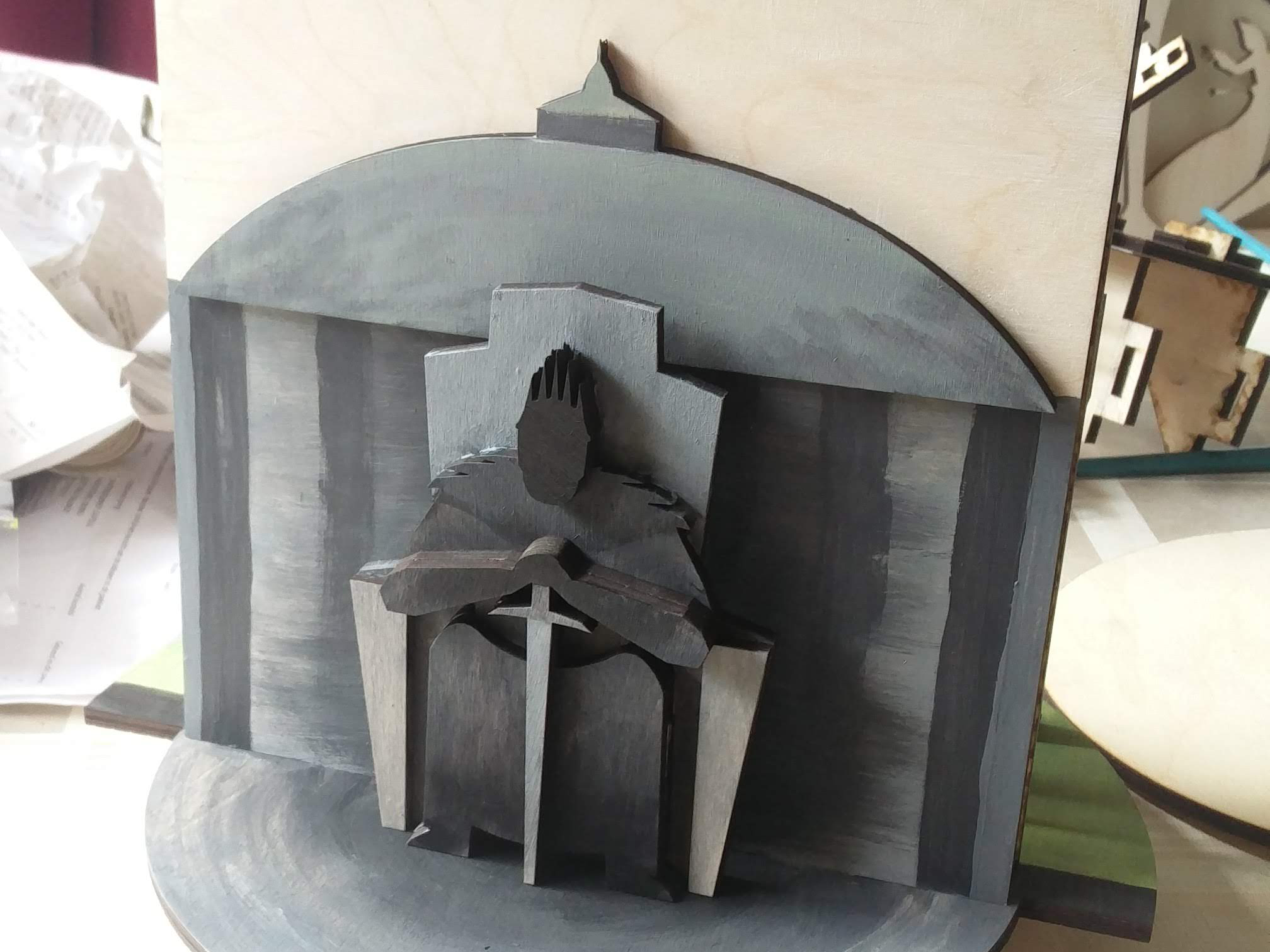After graduating from St. Joost art academy with "Voor Wie het Zien wil",
I started working for museum Het Markiezenhof to create the full version.
I started working for museum Het Markiezenhof to create the full version.
"Voor Wie het Zien wil" tells the story of the fictional, but theoretically plausible history of the oldest complete pair of glasses ever found in the Netherlands. The project follows the museum's "secrets" theme introduced during the tapestry project, and gives viewers a look into the secret shameful thoughts of a clergyman, by having the viewer literally look through a pair of these historical glasses to see the story's hidden core.

The installation has two routes viewers can choose from, one for adults, and a simplified version for kids

Viewers enjoying the installation

Looking through the glasses reveals hidden parts of the story

Viewers can pick up glasses at the start of the installation
My work on the project started with writing and storyboarding the complete story from where the preview left off. I had a basic outline of where the story should go, and worked on the basic layout of the panels to get there. Each panel essentially needed to be designed twice, for before- and after the viewer looks through the glasses.
Once the storyboard was complete, I would start detailed line art, and the accompanying "glasses-on" colour layer. Creating the artwork involved doing historical research for elements like the visual style, characters' clothing, locations, etc.
The dialogue on each of the panels would also be heavily discussed between colleagues to make sure everything made sense historically, and fit within the narrative of the museum's "secrets" theme. A fairly late addition was an alternative childrens' version of the narrative, which involved rewriting a simplified version of each panel's text.
Early pencil sketches based on medieval illustrations

Early stage storyboard, figuring out basic page layout

Late stage storyboards, planning out where text would go, and which elements would be revealed when looking through the glasses

I added an old paper texture in the "glasses on" layer, which served a dual purpose. It would echo old manuscripts, and it would separate the important newly revealed story elements from the less important background elements

"The weight of a secret" - from concept sketches to final panel
Aside from making the digital artwork, my work on this project also included many physical elements.
While we had many of the different technical aspects figured out after the graduation version, we now needed to source materials and parts for the larger-scale, more professional permanent setup. It would need to be easy to maintain and clean, and tough to break. This included sourcing specific PC monitors and testing whether they allowed for the modifications needed to make the special glasses work with them. I also needed to figure out a more practical method of applying the line art.
The graduation version made use of laser-engraved, hand-inked acrylic panels for the line art, but this method was both time-consuming and messy. After experimenting with large transparent printed stickers and various other methods, we settled on ordering the line art as vinyl stickers to apply onto special scratch-proof clear plastic panels.

Preparing to apply the vinyl stickers

The panels with the stickers applied, before cutting to size

Line art panel, close-up

Line art vinyl sticker sheet
The installation's exterior design and positioning in the hallway was done by architect Elvis Kaltofen. Image © Markiezenhof
The Full Story:





















